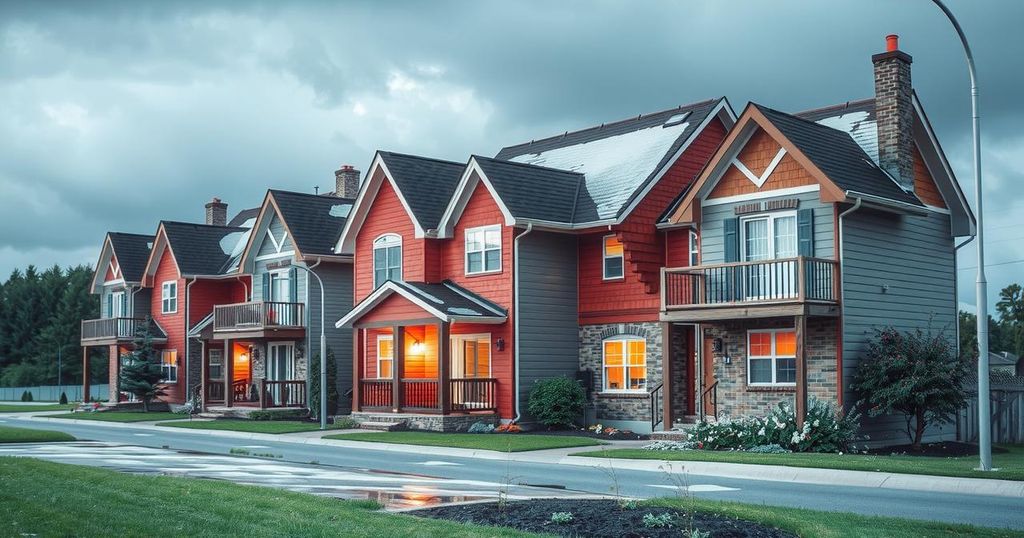The Marshall Fire in Boulder County, Colorado, destroyed over 1,000 homes, revealing significant housing inequities as property values soared and affordability plummeted for residents. Long-term residents like Allison Bequette faced displacement due to rising prices of new builds. Renters experienced immediate crises as rents surged post-fire, indicating that natural disasters disproportionately impact economically vulnerable populations. This situation underscores the importance of implementing equitable housing policies to assist all affected individuals in disaster recovery.
In late 2021, residents in Boulder County, Colorado, witnessed the devastating impact of the Marshall Fire, a catastrophic wildfire fueled by hurricane-force winds that ultimately destroyed over 1,000 homes and caused damages exceeding $2 billion. The aftermath revealed not only the immediate destruction but also the exacerbation of prevalent housing inequities, as the rebuilding efforts led to the construction of significantly larger and more valuable homes, compelling long-time residents like Allison Bequette to leave their communities behind due to unaffordable housing prices.
As the market surged upward with the new builds, the median home price in Louisville reflected a 53% increase, positioning it at $1.45 million for the rebuilt properties compared to an average of $778,000 for 2023. Academic experts, such as Professor Deserai Anderson Crow, highlighted that disasters like the Marshall Fire not only elevate property values but also contribute to the transformation of community dynamics and increased housing costs, further complicating affordability for displaced residents.
The Colorado housing market has faced ongoing challenges even before the disaster struck, with high demand and limited supply continually driving prices above the reach of average residents. Following the fires, homeowners struggled with insurance inadequacies, as most were underinsured, leading to an acute shortage of affordable options for those who lost their homes.
Additionally, renters like Christina Eisert encountered severe housing crises as rental prices soared post-fire, often exceeding $5,000 for a single-family home, a stark contrast to previous market conditions. Research has consistently shown that natural disasters disproportionately affect renters, who often lack adequate financial support during recovery phases, as governmental assistance typically favors homeowners.
The long-term effects of the Marshall Fire, compounded by existing housing market pressures, underscore the necessity for policy changes aimed at addressing systemic inequities, such as increasing affordable housing availability and providing equitable disaster recovery support to all community members, especially renters who frequently bear the brunt of such crises.
Strategies to combat these issues include implementing community land trusts, modifying rental regulations, and ensuring disaster funding reaches those most in need. The experiences of individuals affected by the Marshall Fire reveal that while new developments may cater to a wealthier demographic, they simultaneously deepen housing disparities and undermine community cohesion. Policymakers and local governments must adopt proactive measures to protect vulnerable populations and rebuild communities in a manner that fosters inclusivity and affordability.
The article discusses the lasting implications of the Marshall Fire in Boulder County, Colorado, on housing affordability and community dynamics. Following the catastrophic wildfire, the local housing market experienced significant shifts, with new, larger homes being constructed, thereby raising property values and taxes. These changes affected long-term residents and renters drastically by exacerbating existing inequalities in housing availability and affordability. The article illustrates that natural disasters can significantly influence real estate markets and contribute to greater housing disparities, highlighting the pressing need for effective housing policies that prioritize inclusivity and support for affected individuals, particularly renters, who are often overlooked in disaster recovery programs.
In conclusion, the aftermath of the Marshall Fire serves as a pertinent case study illustrating the complex interplay between natural disasters, housing affordability, and socio-economic inequalities. As communities face the aftermath of catastrophic events, urgent attention is required to implement equitable housing policies that address the needs of all residents, particularly those who are renters, to mitigate the risk of exacerbated disparities. Enhanced strategies must be developed to ensure that vulnerable populations receive the necessary support during recovery and that such tragedies do not further entrench existing inequities within housing markets.
Original Source: www.cnn.com






